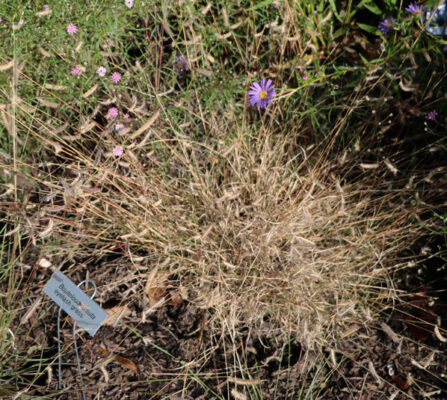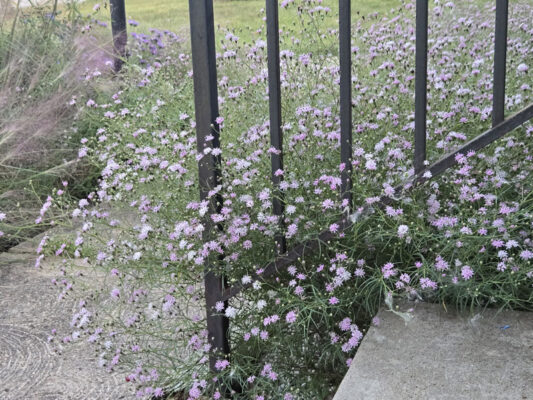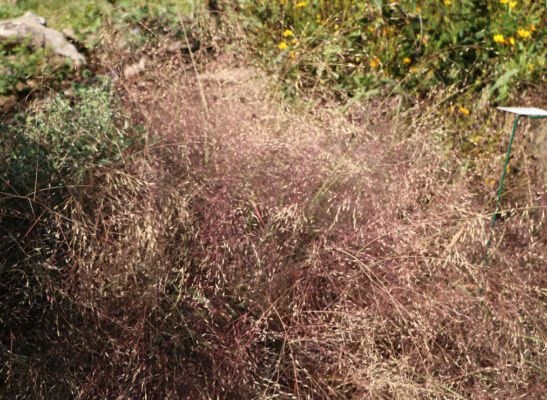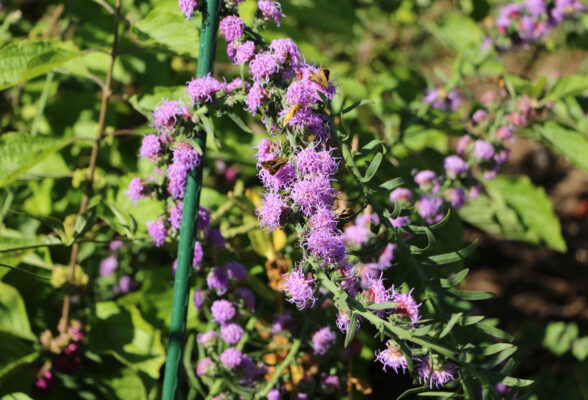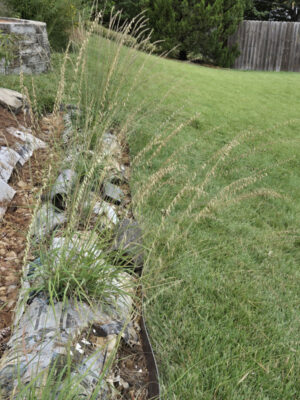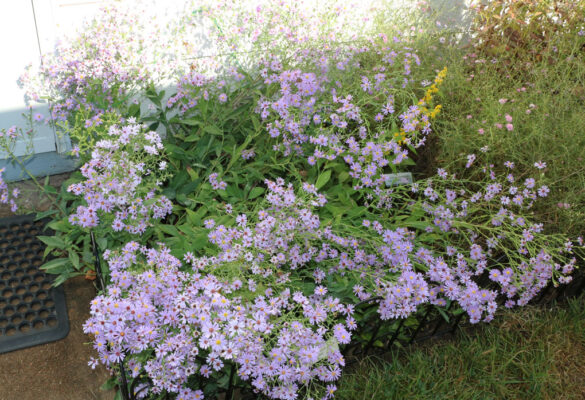post by Donna Short, Chapter member and volunteer
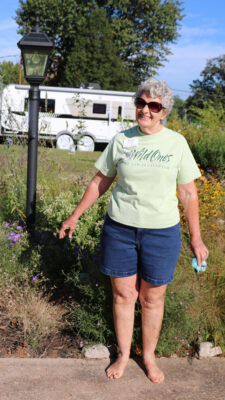 Wild Ones Garden Gathering Highlights
Wild Ones Garden Gathering Highlights
Home of Penny Holtzmann
Wednesday Sep 11 & Saturday Sep 14
We visited the home of a Wild Ones St. Louis Keystone Member to explore her native plant garden and see how it has evolved in the three years since Penny moved there.
Penny discovered native plants during a rainy camping trip 50 years ago when she happened upon a beautiful bloodroot bloom and had to learn more. She was recruited to join Wild Ones by Scott Woodbury over 25 years ago, and has served as Treasurer for our chapter for the last 9 years.
During Penny’s introduction she gave us a list of six native grasses and a challenged us to locate them during our tour and pick a favorite.
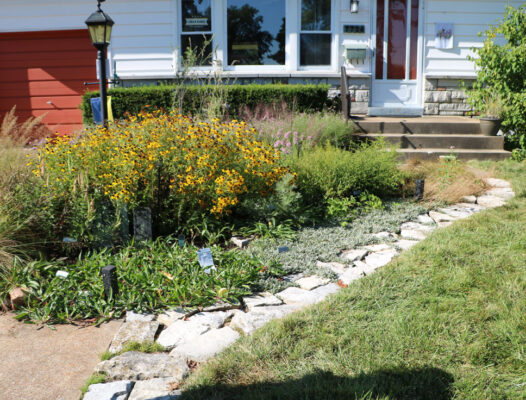
Bordering one of Penny’s front yard gardens is a beautiful path/garden edge, made up of stones from a century-old cabin her father owned in Illinois. Black-eyed susan coneflowers (Rudbeckia missouriensis) are blooming.
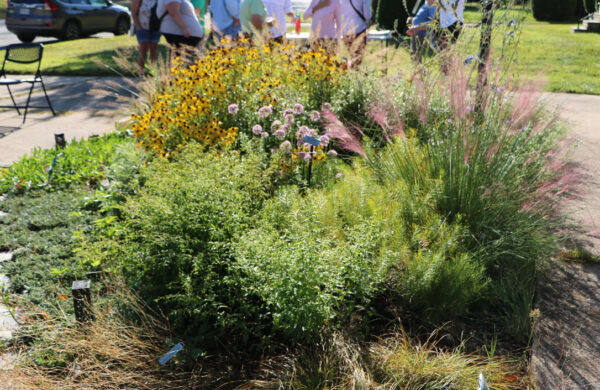
Muhly grass (Muhlenbergia capillaris) shown at the right edge and fall glade onion (Allium stellatum) in the center.
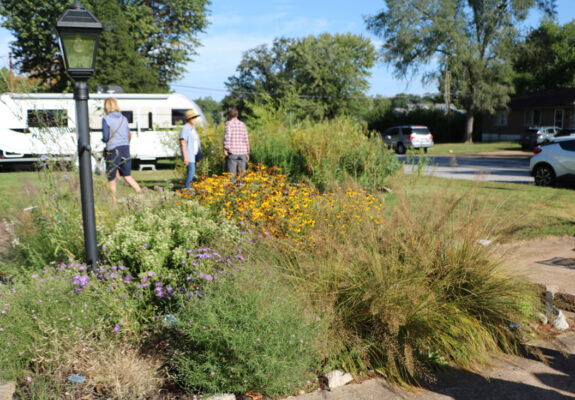
Hairy Mountain mint (Pycanthemum verticillatum), Southern Prairie aster (Eurybia hemispherica) and Prairie dropseed (Sporobolus heterolepis shown.
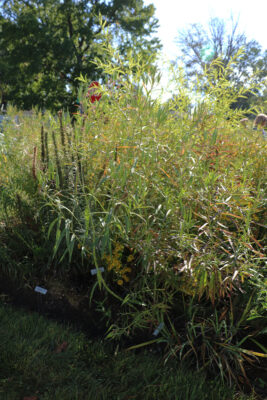
Members found monarch caterpillars and a chrysalis on the Marsh milkweed (Asclepias incarnata). The rain garden has a dozen native species including Helen’s flower (Helenium autumnale) and Marsh Blazing Star (Liatris spicata). The tallest plant, a Prairie willow (Salix humulis) was a stowaway from Penny’s previous yard, coming in with the Copper iris (Iris fulva).
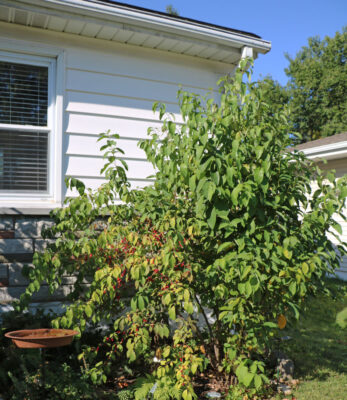
The spicebush swallowtail lays her eggs on the Spicebush (Lindera benzoin). They start out appearing to be bird droppings and change to looking like a small green snake.
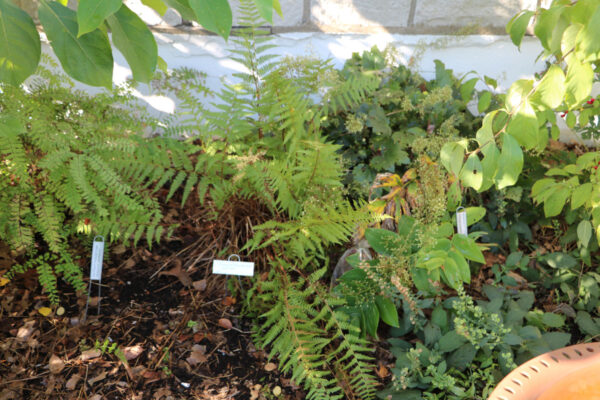
Though the front yard is mostly sunny, there is a small patch of shade containing native ferns such as Maidenhair (Adiantum pedatum) and Lady fern (Athyrium filix-femina), moved from Penny’s previous home.
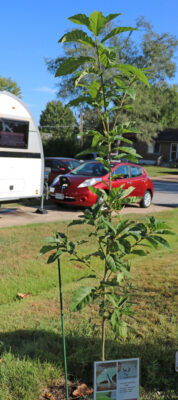
Deer are seldom seen, but they rubbed the bark off this young Chinquapin oak (Quercus prinoides), which caused it to die back to the ground last winter. Explanatory posters, such as the one shown here explaining the life cycle of the Luna moth, were created by Wild Ones Member Kathy Bildner and placed by their host plant.
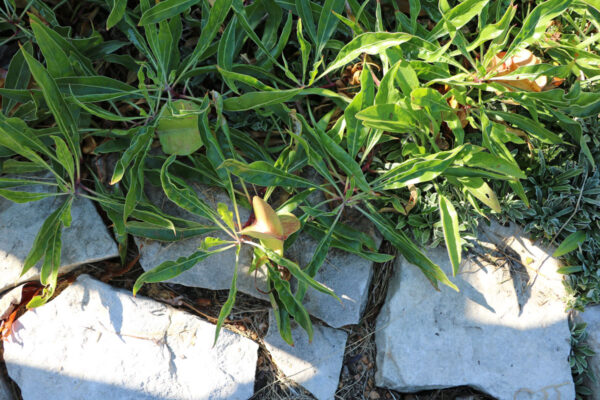
Missouri primrose (Oenotheria macrocarpa) flowers in the evening and withers in the heat of the day. Pollination is mostly by evening and night flying moths. When pollination occurs a 2-3 inch four-winged capsule forms (shown here).
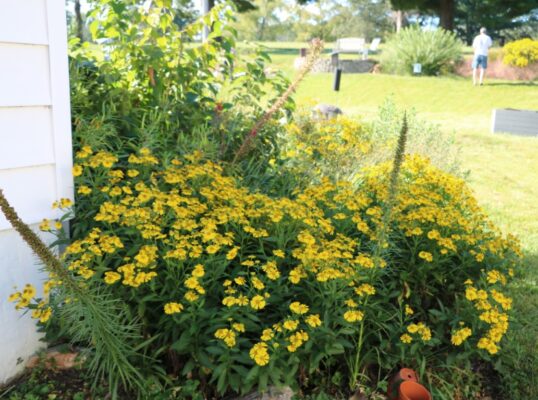
Moving to the rear gardens – Helen’s flower (Helenium autumnale) is blooming in three gardens, because it is such a prolific re-seeder!
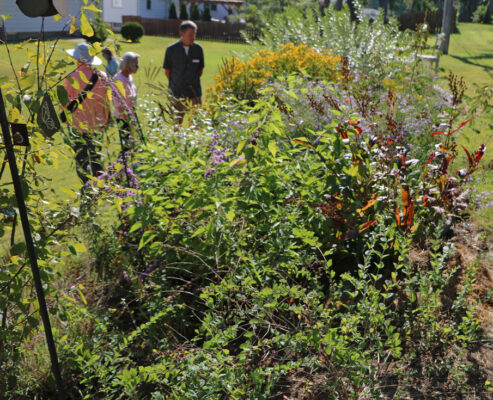
Even before moving in, Penny and three friends removed eight large invasive burning bush along the back property line. The back yard held standing water after a rain, but this was minimized after putting in this garden and bioswale where the burning bush had been.
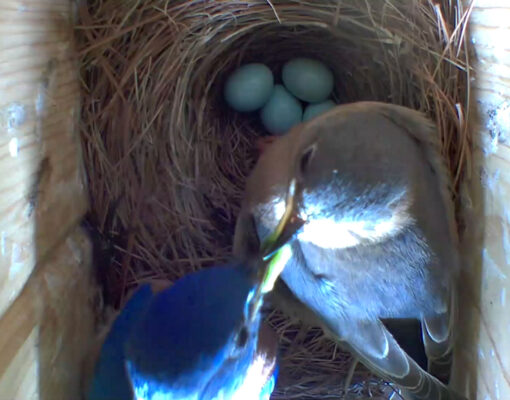
Much to her delight, a family of Eastern bluebirds has nested in Penny’s back yard every summer. The nest box has a small security camera for monitoring the birds’ development.
Bring Conservation Home has certified Penny’s yard at the Silver level. To reach the next level, she plans to enlarge the backyard hill garden and create a rain garden near the street next to the driveway to capture rain from downspouts.
We met to discuss our favorite grass in Penny’s backyard but her neighbor was disturbed by all the activity from a group called “Wild Ones” who was getting excited about “grass” and called the police. In spite of her neighbor who is obviously not a fan of native plants, Penny said people frequently drive by and compliment her on her garden! Thanks, Penny, for providing such an interesting and educational afternoon!

